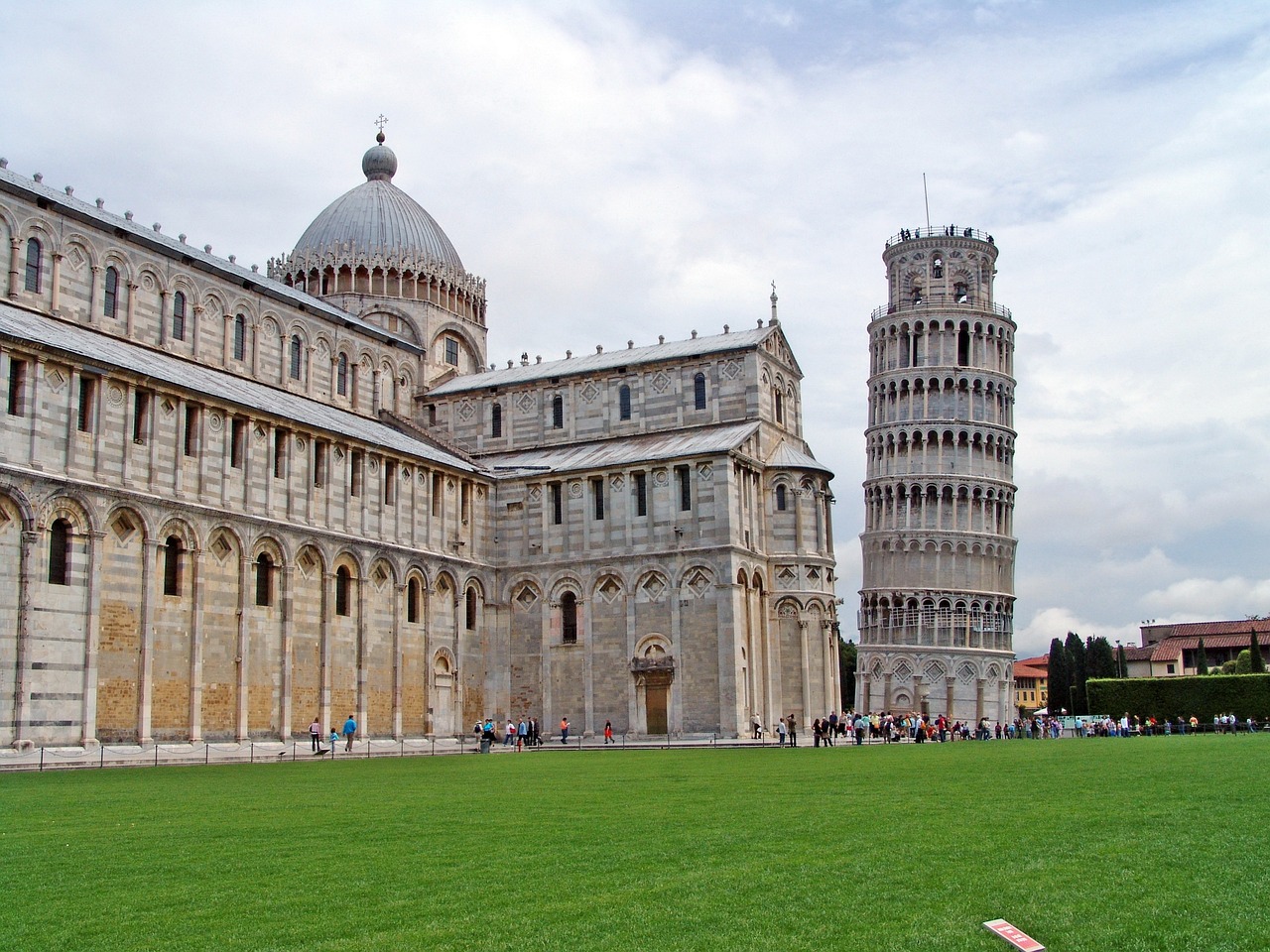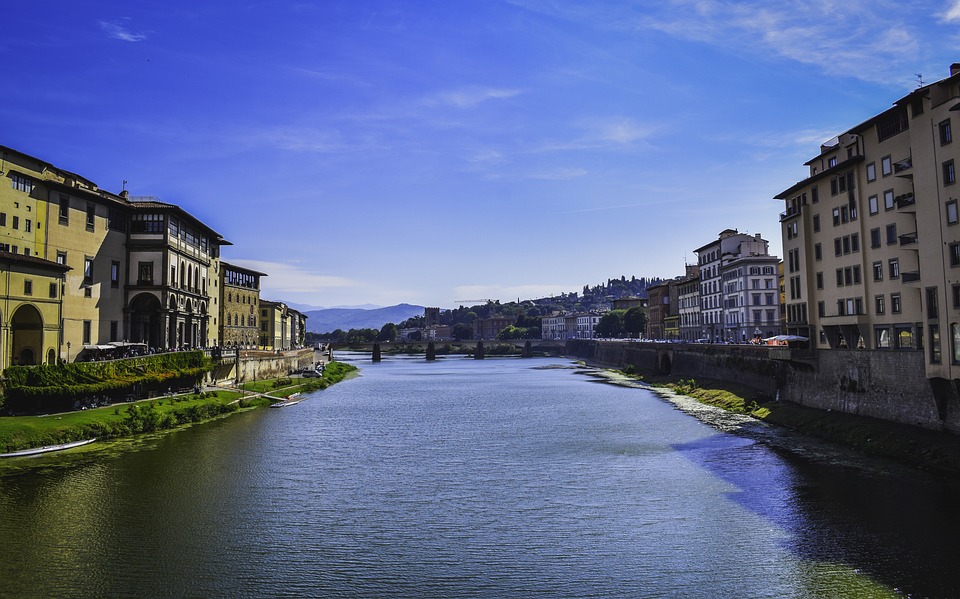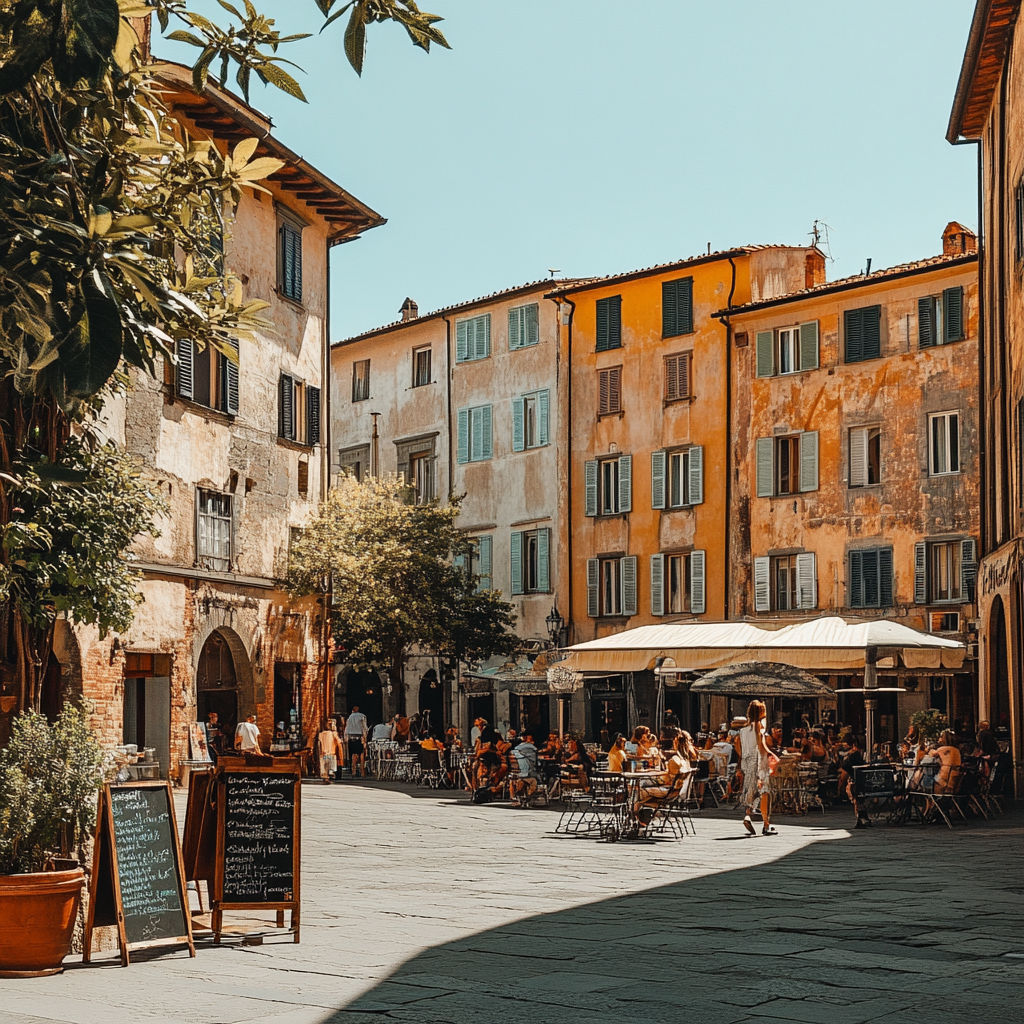The Alps call to hikers with their beauty and rich culture. They offer amazing views and different landscapes. To enjoy these, you must prepare well.
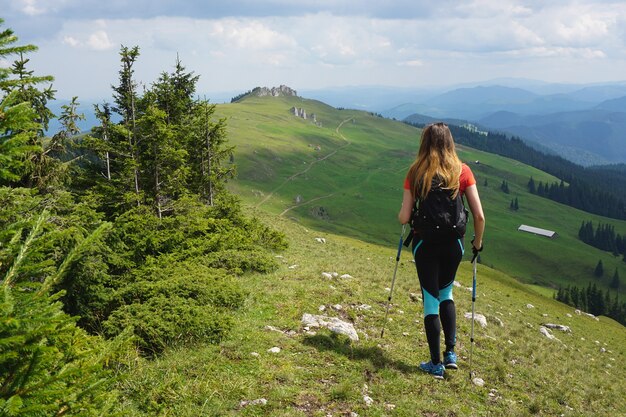
Start getting ready for the Alps 6 months early. You’ll hike 8-10 miles a day, going up and down 2,500 feet. It’s important to be in good shape.
Carry more weight in your pack as you get stronger. Start with 10 lbs and add more slowly. Trekking poles help with balance on tough paths. They also protect your knees.
Key Takeaways
- Start preparing for your Alpine adventure at least 6 months in advance.
- Expect to hike an average of 8-10 miles and 2,500 feet up and down each day.
- Ensure physical readiness by gradually carrying weight in your daypack.
- Use trekking poles to assist with balance and reduce pressure on knees.
- Embrace the stunning views and diverse terrains of the Alps.
Preparation and Training
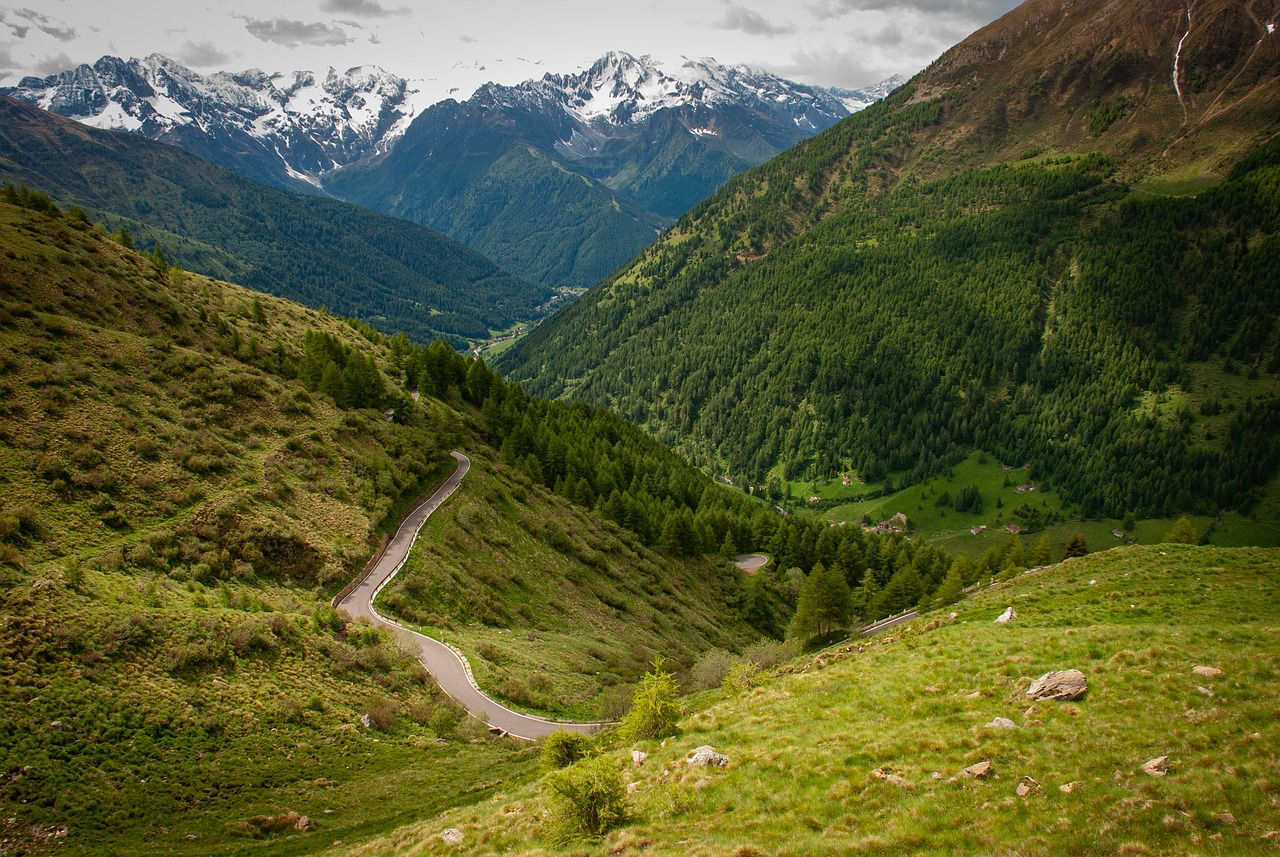
Getting ready for an Alpine adventure means training and planning well. This makes sure you have fun and stay safe. It’s important to train hard to face the Alps’ challenges.
Cardio Workouts
Doing cardio workouts often is key for building endurance. Activities like running, swimming, cycling, and walking help you get ready for long hikes. Start your cardio training six months before your trip to build up your endurance.
Hiking Practice
Practicing on hilly trails is vital for Alpine hiking. Try hikes that are 8-10 miles long to work your muscles and joints. This should feel like the hikes you’ll do in the Alps.
Start training at least eight weeks before your trip. Begin with easy hikes and make them harder as you get stronger. This helps you get ready for the tough conditions in the Alps.
Carrying Weight
Adding weight to your hikes makes you stronger and more prepared. Use a 22-30 liter backpack with water and snacks to simulate the real thing. Slowly add more weight to build muscle and get used to high altitudes.
Wear the same shoes you’ll use on the hike during training. This prevents discomfort and blisters later on.
| Exercise | Repetitions | Frequency |
|---|---|---|
| Jump Squats | 15-20 | 2 times a week |
| Hip Roll Exercise | 10-15 | 2 times a week |
| Step-Ups | 15 each side | 2 times a week |
| Heel Down Exercises | 15 each side | 2 times a week |
| Squat Curl Overhead Press | 10-15 | 2 times a week |
| Side Plank with Leg Raise | 10 each side | 2 times a week |
Remember, being flexible is important. Change exercises or rest if you need to avoid getting too tired. With a good plan, your Alpine hike will be amazing and fun.
Essential Gear and Packing List
Trekking the Alps needs a good hiking gear list for the weather. Having the right Alpine trekking equipment is key for comfort and safety. Let’s look at what you should pack for your trip.
Clothing
Layering is important for hiking clothing. You’ll need about 15 items, like t-shirts, trousers, and jackets. Patagonia and REI are great choices because they’re both quality and useful. Remember to bring extra layers because the weather can change a lot.
- 3 moisture-wicking t-shirts
- 2 pairs of hiking trousers
- 2 fleece or down jackets
- 4 pairs of wool hiking socks
- 1 hat
- 1 pair of waterproof gloves
Backpack
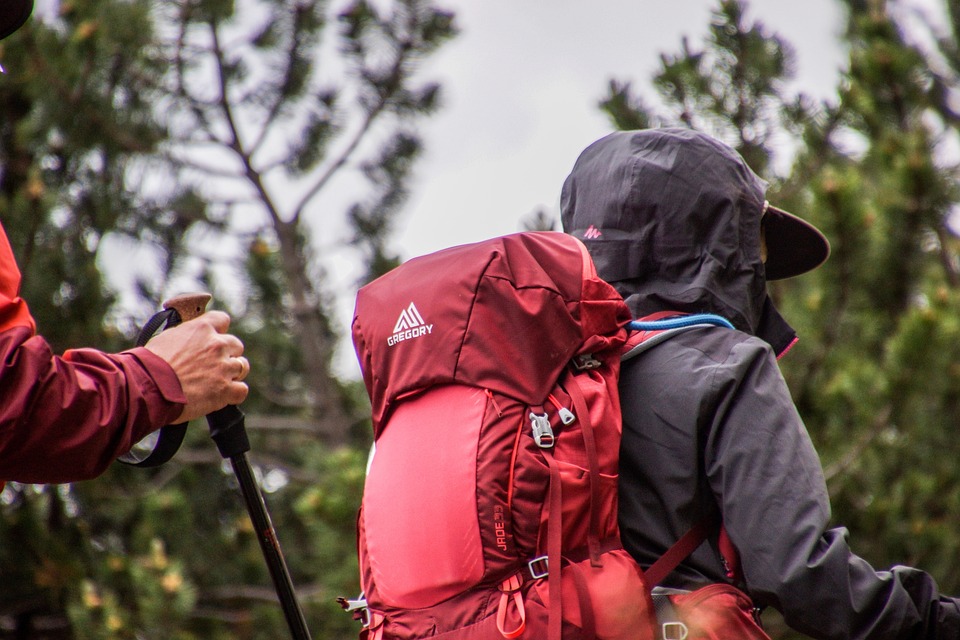
The backpack is a key part of your Alpine trekking equipment. It should weigh about 17kg for long hikes. Deuter and Osprey make reliable backpacks for these trips.
Raingear

Alpine weather can be unpredictable, so you need waterproof hiking gear. A waterproof rain jacket and pants are must-haves. They should be light but strong to keep you dry when it rains.
Trekking Poles
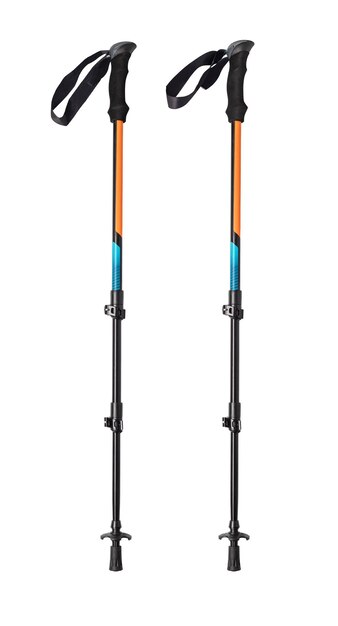
Trekking poles help with balance and protect your joints. Using them before your trip will make you more comfortable and efficient. Black Diamond makes great trekking poles for tough trails.
| Item Category | Recommended Brands | Quantity | Highlighted Features |
|---|---|---|---|
| Clothing | Patagonia, REI | 15 items | Moisture-wicking, layering capability |
| Backpack | Deuter, Osprey | 1 | Overall weight: 17kg |
| Raingear | Various | 2 (jacket and pants) | Waterproof |
| Trekking Poles | Black Diamond | 1 pair | Durable, lightweight |
Hiking Tips
For a great hike in the Alps, think about your gear, the terrain, and the weather. Here’s some Alpine hiking advice to help you. Make sure you have the right shoes, as 85% of hikers say they got hurt because of bad shoes. Sneakers or trail runners are better than old boots.
Don’t try to hike too much at first. Beginners often pick routes that are too hard. Start with a hike under 5 miles and don’t climb too much. Rest on your days off to avoid getting hurt and get ready for longer hikes.
Knowing the route and how to navigate is key to staying safe. Use both your phone and a map to find your way. Make sure your phone is charged and learn about hiking apps. Also, check if you need a permit and look at the weather before you go.
Starting early is a great way to avoid crowds and see more animals. It also lets you enjoy your hike more by taking it easy and saving your energy.
Drinking and eating right keeps you going. Drink a liter of water every two hours and use a reusable bottle. Eat snacks like jerky, dried fruit, or energy bars. And be careful where you step to avoid hurting your ankle.
Always tell someone where you’re going and when you’ll be back. Bring extra clothes for the weather and a first aid kit. Over 70% of hiking accidents happen because people aren’t ready. So, be prepared with the right gear and knowledge for a safe and fun hike.
| Essential Tips | Details |
|---|---|
| Proper Footwear | Choose sneakers or trail runners over old hiking boots. |
| Hydration | Drink one liter of water for every two hours of hiking. |
| Early Start | Increases wildlife spotting chances by 50%, avoids crowds. |
| Navigation | Use both electronic devices and paper maps for mountain trail guidance. |
| Weather Check | Use resources like Mountain-Forecast.com to verify conditions. |
| Communication | Inform someone about your route and return time. |
Popular Hiking Routes in the Alps
The Alps are full of hiking trails for every adventurer. They have routes for both experienced hikers and those who just want to see the views. Here are some top hiking spots in the Alps.
Val d’Anniviers
Val d’Anniviers is a top spot for hikers because it’s easy to get to and has many trails. It’s famous for the Val d’Anniviers hiking trail, which goes through beautiful places like St-Luc and Grimentz. You can easily get back from your hikes with short bus rides.
Some popular hikes here include going from Chandolin to Zinal, and exploring Corne de Sorebois and Bendolla. Val d’Anniviers is a great place to start your Swiss Alps adventure.
Trekking Tours
If you want a guided hike, the Alps have some amazing tours. Alpinehikers offers tours that take you deep into the Swiss Alps. Here are some tours you might like:
- Tour du Mont Blanc: A 10-day trek ranging from 600 to 1,100 EUR per person.
- Walker’s Haute Route: A 10-day hike costing between 800 and 1,500 EUR per person.
- Tour of Monte Rosa: A 9-day adventure priced between 850 to 1,100 EUR per person.
- Gran Paradiso Adventure: A 7-day journey with opportunities to see alpine ibex and chamois.
- Dolomites Guided Walk: Offers varied terrains and climbs for a challenging experience.
Swiss Alps and Jungfrau
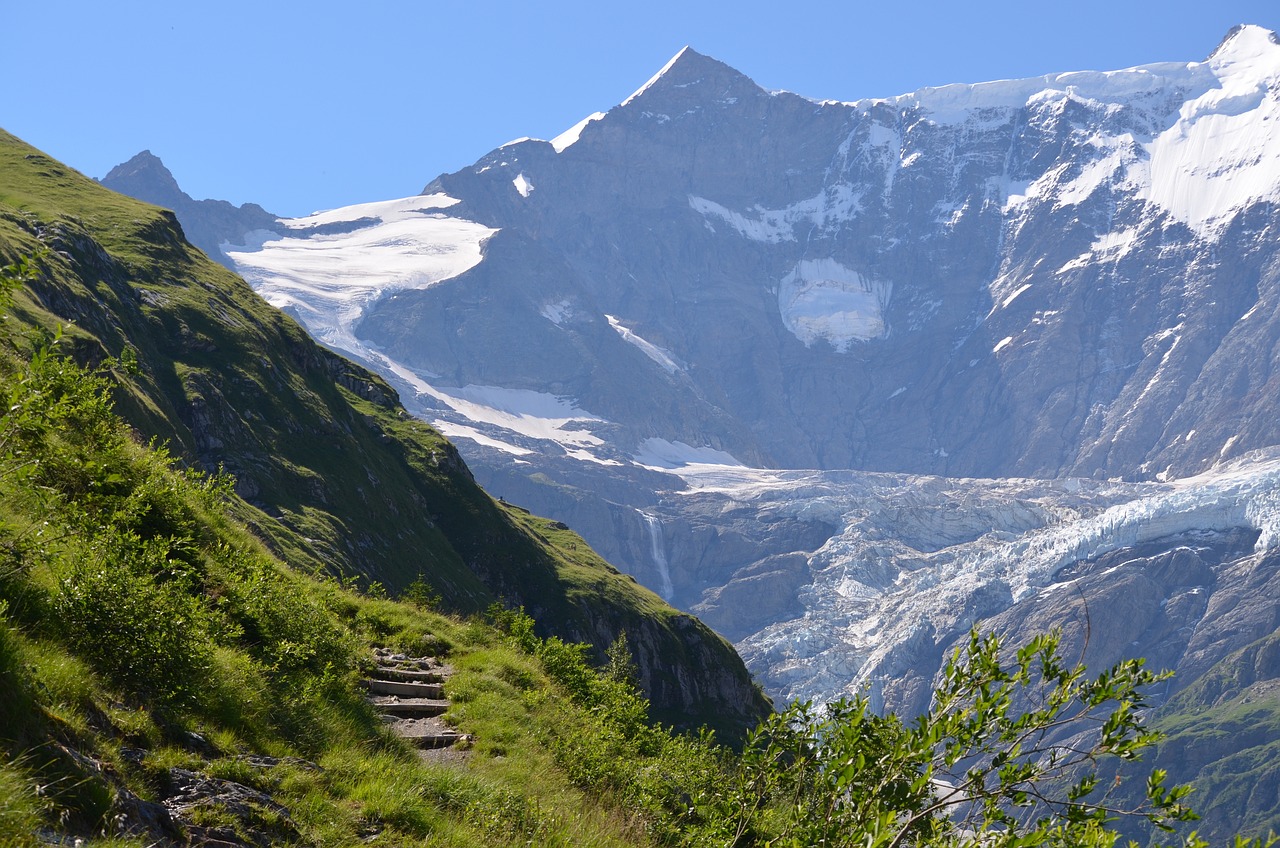
The Jungfrau hiking trails are a must-see in the Swiss Alps. They offer stunning views and a challenge for hikers. You can try the 14-day Alpine Pass Route or the tough Trans Tyrol trek from Garmisch to Innsbruck.
The Jungfrau trails let you see the Alps’ beauty and offer different levels of difficulty. They’re perfect for exploring the Swiss Alps.
Conclusion
Hiking the Alps is a special mix of hard work and mental rest. It’s a journey that makes you feel good. Studies from Stanford University show it lowers stress and sadness. This confirms nature trips are good for our minds.
Getting ready for the hike means training and getting used to carrying your gear. It’s key to have the right shoes, clothes, and tools for the weather. You should also plan your route, know about high places, and pack enough food and water.
Make your hike plan fit your fitness level and get tips from experts. Take breaks and follow the “leave no trace” rule to protect nature. With careful planning and the right gear, the Alps become a beautiful path of achievement. Follow these tips for a safe, unforgettable, and uplifting Alpine hike.







